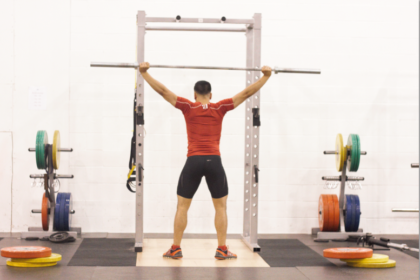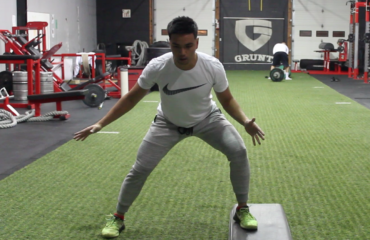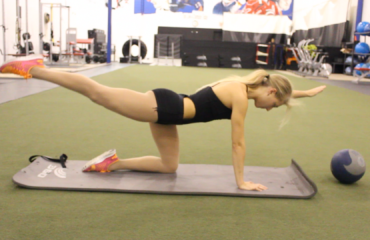Part 1 – How to perform the Olympic lifts (Snatch)

In this two-part series, I’m going to go back to basics and try my best to SIMPLIFY both the snatch and the clean and jerk so that you can get a general idea on how to perform the lifts. When learning the Olympic lifts it is important to understand what they are. The snatch is the most technical out of the two lifts because you are lifting the bar overhead to arm’s length in one motion which requires greater speed.
Now to the nitty-gritty.
STEP 1 – HOOK GRIP
When learning the Olympic lifts it is recommended that you learn to use the hookgrip when gripping the bar. It is when you wrap your fingers over your thumb. It may be a little bit awkward for novice lifters but in time that discomfort will go away. Overtime this grip will help you hold on to the bar with heavier weights. See picture below.
STEP 3 – START POSITION
The feet should be shoulder-width with toes pointed slightly outwards. The bar should be placed over the mid-foot. Depending on your mobility some people start at a quarter squat (partial hip and knee flexion), or full squat (full hip and knee flexion). The picture above is a full squat position.
Note: The lifters that lack mobility and flexibility to start on the floor would start at a hang position and progress their way into a full squat position. Also, if the lifter can’t get into an overhead position, I would have the lifter perform a high hang power snatch (catching the bar overhead with the legs above 90 degrees) and instead of finishing up, the lifter would pause during their power position and squat all the way down and up. The goal is to have the lifter get comfortable with performing a full snatch as soon as possible.HERE’S A VIDEO OF MY SNATCH PROGRESSIONS:
STEP 4 – FIRST PULL
You are going to pull the bar up to your knees while keeping it very close to your shin. You should keep the feet flat and the arms should be relaxed and not tensed (I will explain this later). During this pull, the torso should remain roughly at a 45 degree angle and the only thing that should be rising are the hips. Also, this should not be a violent movement because it will not translate well to the second pull.
STEP 8 – THE FINISH
Finishing the snatch is probably the easiest part… just kidding. After catching the bar, all you have to do is to stabilize the torso and shoulders to secure control of the barbell overhead. Now stand up by extending the knees and hips. The snatch is not complete until you are motionless for about a second during the stand position.
Note: The snatch is a very complex lift that requires lots of technical preparation, don’t be discourage if you can’t perfect the technique right away. It involves a lot of patience and practice. Even I’m still trying to tweak my technique to become more efficient in executing the Olympic lifts. However, I would still highly recommend finding a good weightlifting coach to help you become proficient in performing the Olympic lifts.
Stay tuned for Part 2: Back to Basics – How to Perform The Olympic Lifts (Clean and Jerk)


